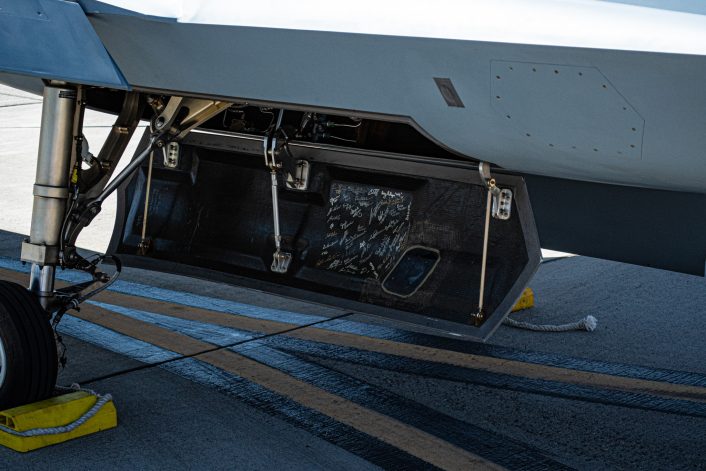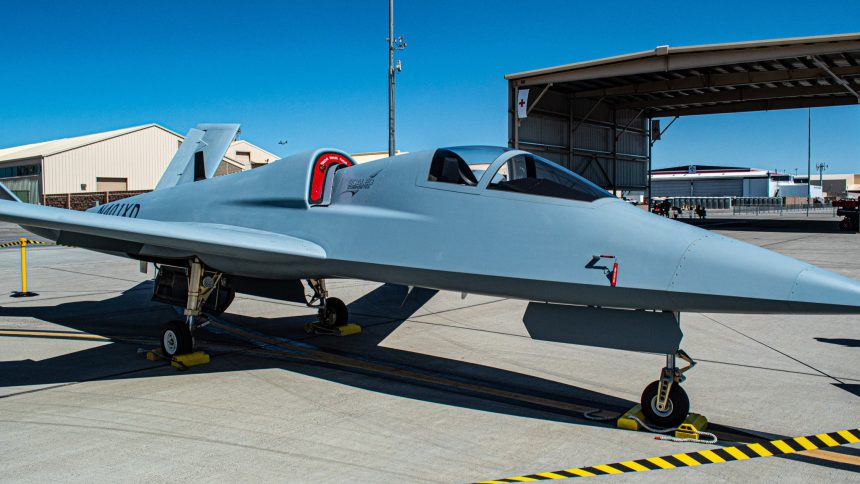The Model 281 Proteus and Model 401 Sierra were on static display at Nellis Air Force Base for Aviation Nation 2025.
Nellis Air Force Base, Nevada, hosted the Aviation Nation 2025 airshow on Apr. 5-6, 2025. In addition to the flight exhibitions, a host of aircraft were on static display. Among these were two unconventional aircraft, the Model 281 Proteus and a Model 401 Sierra of Scaled Composites.
“Proteus and the 401s have been doing incredibly important work for many years, and continue to today,” said Greg Morris, President of Scaled Composites. “We are fortunate to be able to take a brief break in their flight test schedules to share these aircraft with the public.”
This was a significant event for one of the aircraft specifically, as it was the first time a Model 401 Sierra was on public display. Our friend Steve Fortson was among the visitors at the airshow and captured the photos you can see in this article, giving us a closer look at these two interesting aircraft.
Model 281 Proteus
The Model 281 Proteus has been designed for high altitude loiter, which is achieved with the use of two sets of long wings, positioned in tandem, and low wing loading, as well as two Williams International FJ44-2E engines. Specifically, Proteus was designed to carry payloads in the 2,000 lb class to altitudes above 50,000 ft and remain on station up to 14 hours.
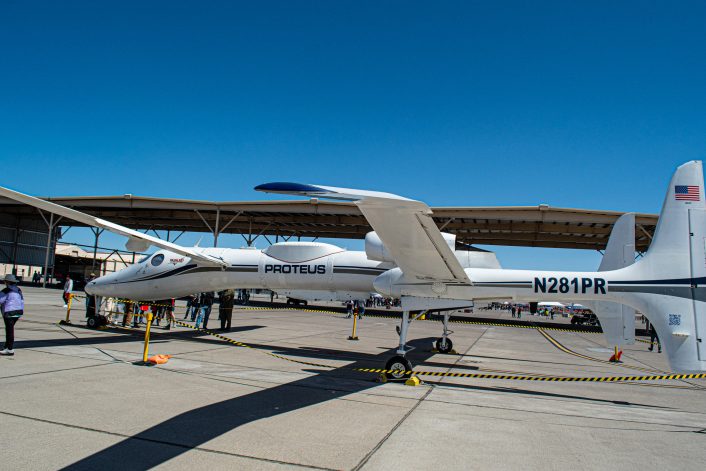
Because of this, Scaled Composites describes Proteus as the world’s most cost-effective high-altitude research aircraft. Missions for Proteus include telecommunications, reconnaissance, atmospheric research, commercial imaging, and space launch.
The aircraft is optionally piloted, with the company describing it as intended for both piloted and UAV missions. It usually flies with a crew of two, while it can fly semi-autonomously or controlled from a ground station when unmanned.
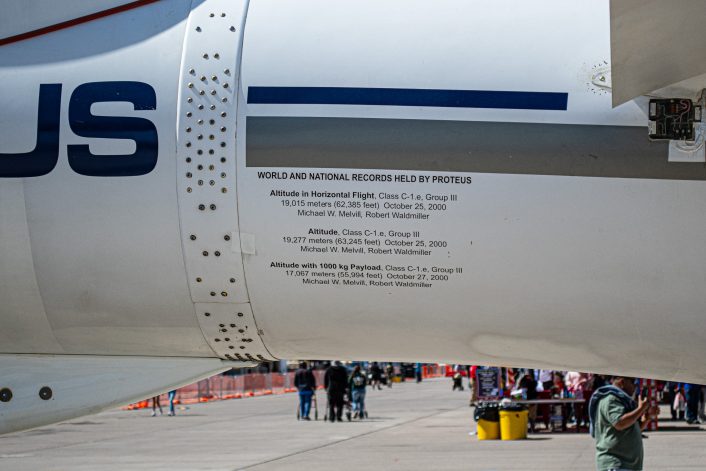
The Model 281 first flew in 1998, flying over 35 unique payloads since then and still continuing to be an asset to the high-altitude research community, with over 1,000 flights and 4,500 flight hours to date. In 2000, Proteus achieved three world altitude records, which still stand today: Altitude in Horizontal Flight (62,385 ft), Altitude (63,245 ft) and Altitude with 1,000 kg Payload (55,994 ft).
The aircraft on display at Nellis, the only Model 281 ever built, sported some interesting markings on the side. Interestingly, one of them indicated a snake strike during landing, while another referred to the sprinkler system of Proteus’ hangar going off when the aircraft was inside.
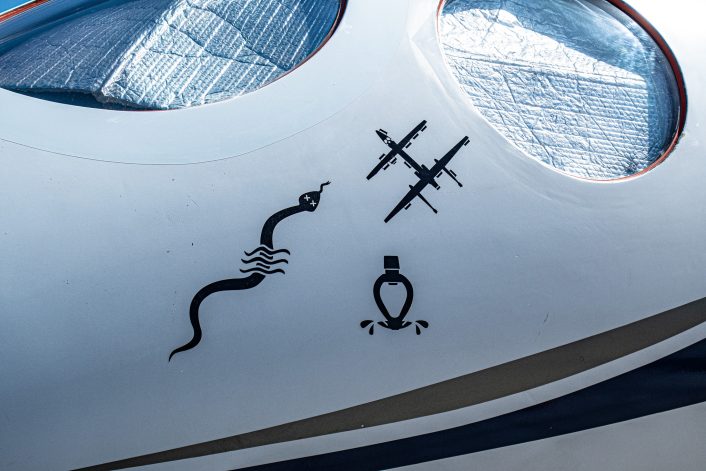
Model 401 Sierra
The Model 401 Sierra project was developed as clean sheet design for a low-cost manufacturing technology demonstrator aircraft, flown by a single pilot, powered by a single turbofan, and operating at medium altitudes, with two identical vehicles being built. Development took only 24 months from initial concept to the first flight for the first Model 401 in October 2017, followed six months later by the second aircraft.
As a reference to Scaled Composites’ earlier Agile Responsive Effective Support (ARES) test jet, the two Model 401s are also known as “Sons of Ares”, which is the god of war in Greek mythology. The two aircraft have been therefore further nicknamed Phobos and Deimos, sons of Ares and gods of fear and terror, respectively. The nicknames are also reflected by the registrations of the two jets, N401XP and N401XD, respectively.
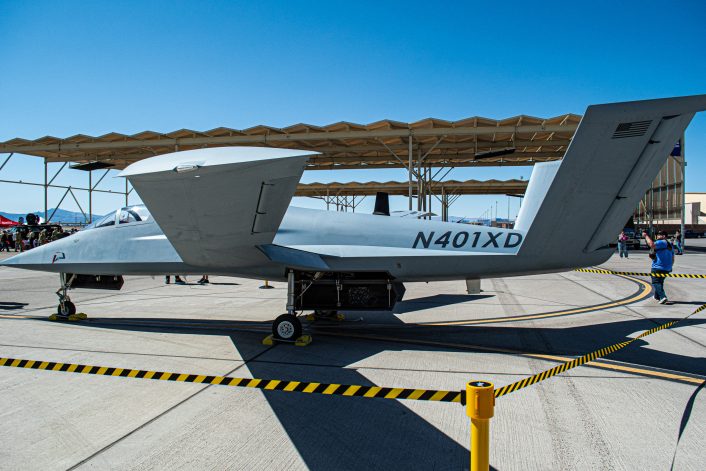
The Model 401, also known as Sierra by the company, is one of the most mysterious aircraft currently being used for flight testing outside of the military. Following initial performance envelope expansion, both aircraft started to conduct payload development testing for a wide variety of customers.
In fact, as stated by Scaled Composites, the aircraft are able to incorporate a diverse range of payload systems with over 80 cubic feet of internal payload volume and up to 2,000 pounds of payload weight capacity. Among these there might be a laser directed energy system, as seen in 2022 with a pod installed under the fuselage marked with an art seemingly referring to a laser.
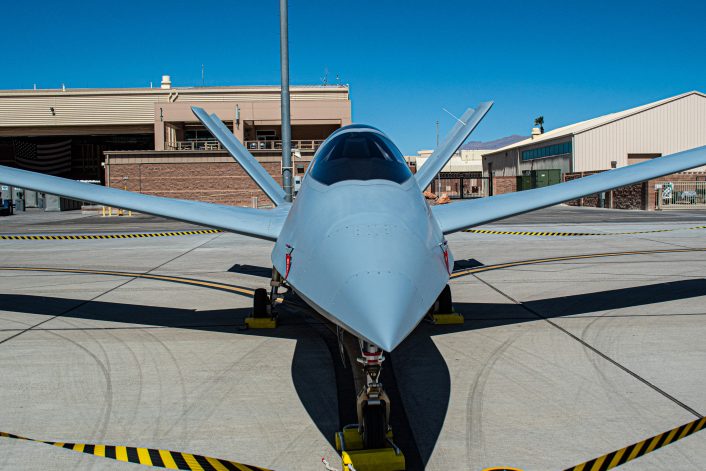
We can’t rule out the possibility of test flights for the research of new capabilities to protect an aircraft against directed energy weapons. Let’s not forget that a Model 401 was the first aircraft to be spotted with a mirror-like coating two years earlier, before similar coatings appeared on F-22s, F-35As and F-35Cs, and F-117s working with the U.S. Air Force and Navy test and evaluation units.
